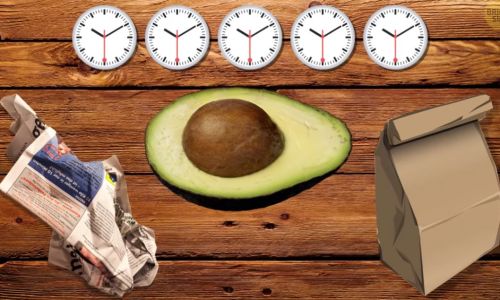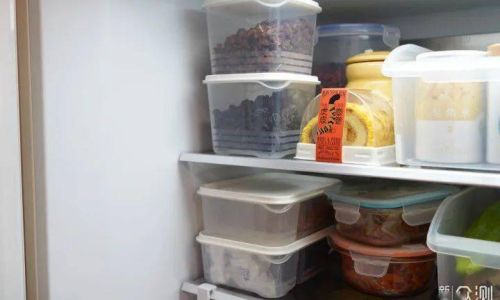Table of content
- Type of Mushroom
- Freshness at Purchase
- Pre-Storage Handling
- Storage Environment
- Avoid Plastic Bags (Unless Modified)
- Maintain Consistent Temperature
- Do Not Freeze Raw Mushrooms
- Layer with Paper Towels
- Avoid Overcrowding
- Dehydration
- Pickling
- Freezing (Cooked)
- Mushroom Powder
- “Mushrooms Should Be Washed Before Storing”
- “Storing Mushrooms in Water Extends Freshness”
- “All Mushrooms Spoil at the Same Rate”
Mushrooms, with their earthy flavors and versatile culinary applications, are a staple in kitchens worldwide. However, their delicate nature often leaves home cooks and food enthusiasts wondering: How long can mushrooms stay fresh in the refrigerator? The answer, like many culinary questions, depends on several factors, including the type of mushroom, storage methods, and pre-storage preparation. This article delves into the science of mushroom preservation, offering actionable tips to extend their shelf life while maintaining their texture, taste, and nutritional value.
Understanding Mushroom Composition and Spoilage
Before addressing storage timelines, it’s essential to grasp why mushrooms deteriorate quickly. Mushrooms are fungi, not plants, and their cell structures differ significantly from vegetables. Unlike fruits or vegetables with protective skins, mushrooms have porous, sponge-like flesh that absorbs moisture and oxygen, accelerating decay. Additionally, their high water content (up to 90% in some varieties) creates a breeding ground for bacteria and enzymes that break down cellular walls, leading to sliminess, discoloration, and foul odors.

Factors Affecting Mushroom Shelf Life
The lifespan of refrigerated mushrooms hinges on multiple variables. Here’s a breakdown of the most critical factors:
Type of Mushroom
- Button/White Mushrooms: These common varieties (Agaricus bisporus) typically last 5–7 days when stored properly.
- Shiitake Mushrooms: With their sturdy caps, shiitakes can endure 7–10 days in the fridge.
- Oyster Mushrooms: Their delicate, fan-shaped structure limits shelf life to 3–5 days.
- Exotic Varieties: Enoki, maitake, and morel mushrooms have varying durabilities, often ranging from 3–7 days.
Freshness at Purchase
Mushrooms begin aging the moment they’re harvested. Locally sourced or foraged mushrooms may last longer than those shipped cross-country, as they spend less time in transit.
Pre-Storage Handling
- Washing: Rinsing mushrooms before storage introduces excess moisture, shortening their lifespan.
- Trimming: Removing damaged or bruised areas post-purchase prevents spoilage from spreading.
Storage Environment
Temperature, humidity, and airflow play pivotal roles. The refrigerator’s cold, dry atmosphere slows bacterial growth but requires careful packaging to prevent dehydration.
Optimal Storage Methods to Maximize Freshness
Proper storage is the cornerstone of preserving mushrooms. Follow these evidence-based practices to extend their refrigerator life:
Avoid Plastic Bags (Unless Modified)
While grocery stores often package mushrooms in plastic, this material traps moisture, leading to rapid spoilage. Instead:
- Use Paper Bags: Brown paper bags allow airflow while absorbing excess humidity.
- Punch Holes in Plastic: If using original packaging, pierce small ventilation holes to promote circulation.
- Linen/Cloth Pouches: Breathable fabric bags offer an eco-friendly alternative.
Maintain Consistent Temperature
Set your refrigerator to 34–38°F (1–3°C). Avoid placing mushrooms in the crisper drawer if it’s overly humid; the main compartment often provides better airflow.
Do Not Freeze Raw Mushrooms
Freezing raw mushrooms causes cellular damage, resulting in a mushy texture upon thawing. However, cooked or sautéed mushrooms freeze well for 6–12 months.
Layer with Paper Towels
Line storage containers with paper towels to absorb moisture. Replace towels daily if mushrooms appear damp.
Avoid Overcrowding
Store mushrooms in a single layer to prevent bruising and ensure even cooling.
Signs of Spoilage: When to Discard Mushrooms
Even with meticulous storage, mushrooms will eventually degrade. Watch for these indicators:
- Slimy Texture: A sticky film indicates bacterial growth.
- Dark Spots/Bruising: While some discoloration is normal, large black or green patches signal rot.
- Foul Odor: Fresh mushrooms have a mild, earthy scent. A pungent, ammonia-like smell means they’re past their prime.
- Shriveling: Excessive dehydration renders mushrooms tough and inedible.
Safety Note: Consuming spoiled mushrooms can cause food poisoning. When in doubt, follow the adage: “When in doubt, throw it out.”
Advanced Techniques for Long-Term Storage
For mushroom lovers seeking to reduce waste or stock up during harvest season, consider these preservation methods:

Dehydration
- Oven Drying: Slice mushrooms thinly and bake at 150°F (65°C) for 4–6 hours until crisp.
- Food Dehydrator: Use at 125°F (52°C) for 8–10 hours.
Store dried mushrooms in airtight jars for up to a year. Rehydrate in warm water before use.
Pickling
Preserve mushrooms in vinegar-based brines with herbs and spices. Canned pickled mushrooms last 6–12 months when refrigerated.
Freezing (Cooked)
Sauté mushrooms in oil until tender, then freeze in portions. Thaw in the refrigerator overnight before use.
Mushroom Powder
Dehydrate mushrooms, then blend into a powder. Add to soups, sauces, or seasonings for umami richness.
Debunking Common Myths About Mushroom Storage
“Mushrooms Should Be Washed Before Storing”
False. Washing adds moisture, hastening decay. Clean mushrooms just before cooking with a damp cloth or brush.
“Storing Mushrooms in Water Extends Freshness”
False. Submerging mushrooms in water promotes bacterial growth and waterlogging.
“All Mushrooms Spoil at the Same Rate”
False. As discussed earlier, varieties like shiitake and oyster mushrooms have distinct shelf lives.
The Role of Ethylene Gas
Mushrooms are sensitive to ethylene, a natural gas emitted by fruits like apples and bananas. Store mushrooms away from ethylene-producing produce to prevent premature aging.
Case Study: Commercial Mushroom Storage
Industrial facilities use controlled atmosphere storage, lowering oxygen levels and raising CO₂ to slow respiration. While impractical for home kitchens, this highlights the impact of gas composition on shelf life.
Environmental Impact of Mushroom Waste
Food waste is a global crisis, with mushrooms contributing to landfill methane emissions. By mastering storage techniques, consumers can reduce their carbon footprint while saving money.
Conclusion: Balancing Convenience and Sustainability
The question “How long do mushrooms last in the refrigerator?” lacks a one-size-fits-all answer. However, by prioritizing freshness at purchase, minimizing moisture, and employing smart storage strategies, you can enjoy mushrooms for up to 10 days—or longer, with preservation methods. Whether you’re a home cook, a forager, or a sustainability advocate, understanding mushroom storage transforms this humble ingredient into a pantry staple that delights the palate and respects the planet.
Final Tip: Label storage containers with the purchase date to track freshness and avoid guesswork. With practice, you’ll master the art of mushroom preservation—one refrigerator drawer at a time.






0 comments